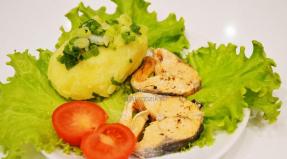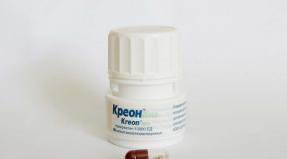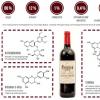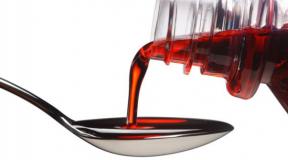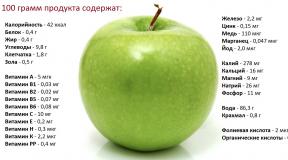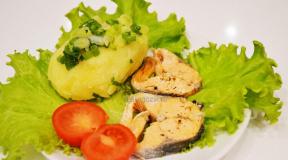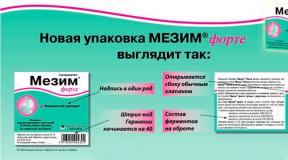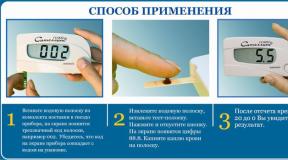Is it possible to eat pears with type 2 diabetes?
Type 2 diabetes mellitus, or as it is also called non-insulin-dependent type, affects more and more people every year. This is due to several factors, the main of which are considered to be malnutrition, overloaded with quickly digestible carbohydrates, obesity and a sedentary lifestyle.
When making a "sweet" diagnosis, the main therapy will be a low-carbohydrate diet, which is based on the choice of products according to their glycemic index (GI). This indicator makes it clear how fast the glucose that enters the blood is broken down after eating a particular food product. Endocrinologists tell diabetics only about the most common products, sometimes forgetting to devote time to each vegetable or fruit, or rather their variety.
In this article we will talk about pears. It will be considered whether it is possible to eat pears with diabetes, whether there are differences in the varieties of conference, miracle and Chinese pear, their glycemic index and calorie content, how fruit sauce and tea from branches are prepared, what is the daily allowance of this fruit in a diabetic diet.
Glycemic index of pear
For diabetics, it is necessary to choose low-calorie foods, and it is especially important that they have a low glycemic index, that is, up to and including 50 units. Such food will not be harmful to health and will not increase blood sugar. That food, in which the GI ranges from 50 to 69 units, can be present on the menu only twice a week, and then in small quantities. Products with an index over 70 units significantly increase the concentration of glucose in the body.
It should be borne in mind that when the consistency of vegetables and fruits changes, their glycemic index increases slightly. But for products with low GI, it is allowed to bring them to a state of puree, since this indicator will still not go beyond the permissible norm.
You also need to know that with high blood sugar, any fruit juices are strictly prohibited, even if they are made from fruits with a low GI. This is explained very simply - with this method of processing the product, it loses its fiber, the concentration of glucose increases and it enters the blood rather quickly. Just a glass of juice can raise blood glucose levels by five mmol/l.
Pear, regardless of variety, has the following indicators:
- glycemic index is 30 units;
- calorie content per 100 grams of product will be up to 70 kcal.
Based on these indicators, a positive answer is formed to the question - is it possible to eat a pear with type 2 diabetes.
A pear can be eaten up to 200 grams per day, given that other fruits and berries were not consumed by a diabetic on that day. Pear puree is also allowed in the same amount.
Diabetics often choose pear puree baby food TM "miracle child", which is made without sugar.
The benefits of pears
Sugar level
Due to the fact that this fruit has a low glycemic index and low calorie content, it is widely used in a variety of diets, even those aimed at reducing excess weight. The Chinese pear is considered the least high-calorie, in 100 grams of the product there are only 42 kcal, while it has a sweet taste.
It is a mistake to believe that the sweetness of pears forms an increased amount of fructose. Not at all, fruits with a high content of organic acid, but not fructose, have a less sweet taste.
Pear is one of the few fruits that can "boast" of a rich vitamin and mineral composition. Its benefits are almost impossible to replenish with other berries and fruits. That is why pears for type 2 diabetes are of great value, because the patient's body often receives less vitamins. Try to eat a pear at least a few times a week.
- provitamin A;
- B vitamins;
- vitamin C;
- vitamin E;
- vitamin K;
- vitamin H;
- phosphorus;
- potassium;
- molybdenum;
- sodium.
Such an abundance of valuable substances makes pears for type 2 diabetes an indispensable addition to the main diet. This fruit is also useful due to the presence of monosaccharides, dietary fiber and unsaturated fatty acids.
However, like any product, the pear has its contraindications. It is strictly forbidden to use them for any diseases of the gastrointestinal tract, such as ulcers, enterocolitis and gastritis. Therefore, to the question - is it possible to eat a pear with diabetes and concomitant diseases of the gastrointestinal tract, the answer will be - no.
Eating pears is useful, because the body has the following positive effects:
- the level of bad cholesterol decreases;
- the heart muscle and the cardiovascular system as a whole are strengthened;
- high calcium content strengthens bones, nails and hair;
- the process of hematopoiesis is normalized;
- iron and folic acid will strengthen the walls of blood vessels;
- the content of the natural antibiotic arbutin has a detrimental effect on a number of harmful microbes.
Given all these positive aspects, the answer to the question - is it possible to eat pears for diabetes, will definitely be yes.
To get the maximum benefit from pears, they must be eaten at least half an hour after the main meal, as a separate product.
Pear sauces
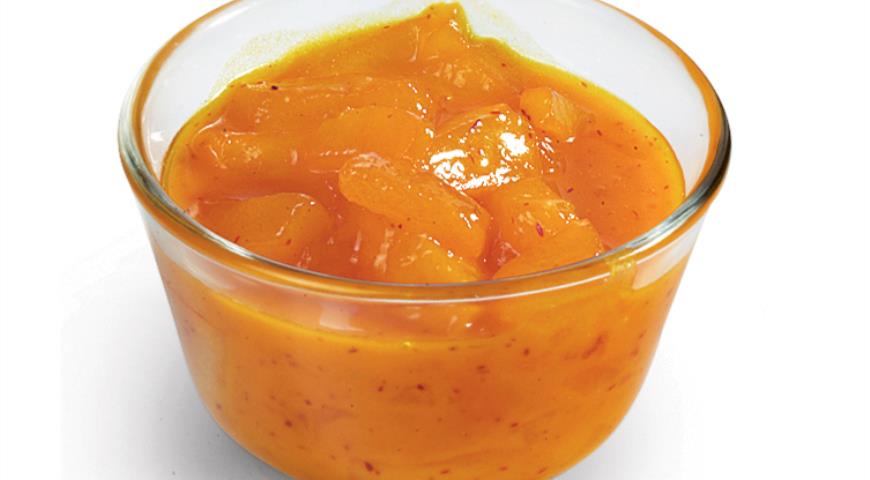 Sauce is an excellent addition to a variety of meat and fish products, and pear sauce will add savory notes to ordinary dishes. It is important that with diabetes, sauces can only be prepared without sugar, for example, certain varieties are acceptable - acacia, linden or pine. Such a beekeeping product has an index of up to 50 units, the daily allowable rate will be 10 grams or one tablespoon.
Sauce is an excellent addition to a variety of meat and fish products, and pear sauce will add savory notes to ordinary dishes. It is important that with diabetes, sauces can only be prepared without sugar, for example, certain varieties are acceptable - acacia, linden or pine. Such a beekeeping product has an index of up to 50 units, the daily allowable rate will be 10 grams or one tablespoon.
There are various recipes for sauces, some are suitable for meat dishes, others for fish, and others can complement the taste of cottage cheese soufflé or other desserts.
Pear sauce according to the first recipe is perfect for beef or veal. It must be served hot. Ingredients are for four servings.
You will need the following ingredients:
- five small sweet and hard pears;
- one tablespoon of acacia honey;
- one tablespoon of cream with a fat content of up to 15%;
- a teaspoon of mustard seeds;
- a tablespoon of butter;
- half a teaspoon of ground ginger.
Remove the cores from the pears and cut them into eight pieces each. Melt the butter in a frying pan and place the fruit in it. Cook for a few minutes over low heat, stirring constantly. After adding honey, and when the future sauce is similar in consistency to syrup, add ginger and mustard seeds, previously mashed in a mortar. Salt and pepper to taste, mix thoroughly.
After pouring in the cream, mix again and cook, uncovered, until the excess liquid has evaporated and the sauce has thickened.
Pear sauce for diabetics can be served with beef, and for people who do not have a “sweet” disease, add pork or lamb dishes with this sauce.
Important Rules
It is important not only to select products with low GI and low calorie content, but also to know the second type thoroughly. So, fruits and berries should be included in the diet in the first half of the day, the allowable daily intake should not exceed 200 grams. Fermented milk products are perfect for a snack and a second dinner, as they are low in calories and easily absorbed by the body.
Proper low-carbohydrate nutrition is a good compensation for elevated blood glucose levels. But it is equally important to engage in moderate physical activity every day, such as swimming or cycling. Diet and exercise are the first helpers in the fight against the “sweet” disease.
The video in this article talks about the benefits of pears.

